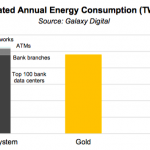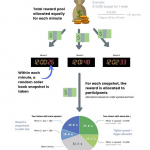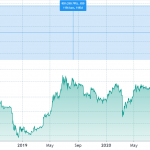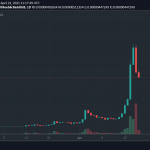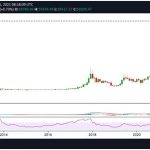BlockchainOS Coin is what BOSCoin means. OS means “operating system,” for the completely non-technical among us. It differs significantly from other coins we’ve covered, as well as Bitcoin, Litecoin, and most other established cryptocurrencies. BOSCoin is not governed by the rules of consensus that are established and modifiable only by core developers with agreement from miners and full nodes, as is the case with Bitcoin, but instead by a form of democracy.
BOSCoin’s well-written whitepaper opens by crediting Ethereum with being the “prior art” in the smart contract world, and uses the notion of Ethereum as a jumping point to their own innovations. The authors take issue with the Turing-completeness of Ethereum, or the ability to replicate the functions of a Turing machine/act as a full-blown programming language.
However, the freedom and flexibility provided by the Turing-complete language which Ethereum is based on is the cause for several serious problems. We believe that using a turing-complete language may be inappropriate for writing smart contracts as they are inherently undecidable. Due to this undecidability issue, a smart contract based on a Turing-complete language will make it difficult to know what a smart contract will do before running it.
BOSCoin takes a different approach than simply adding a cost to the execution of smart contracts. They intend to create easier-to-understand “Trust Contracts.” Further, they wish to propel solutions for the following issues that have long been bothersome in cryptocurrencies more broadly:
- Democratic governance. Node operators dubbed the “Congress Network” will have the power to propose and vote on proposals for improvement of the system as a whole. This is why BOSCoin refers to itself as “self-evolving.”
- This is remarkably different from Bitcoin, which, as the Block Size Debate has shown us, suffers from a useful mechanism to truly gauge what users want. Reliance on social media and the like has led to great divisions within the community, notably with the exit of Gavin Andresen and Mike Hearn from the core development team.
- Anti-centralization initiative. The whitepaper notes that a form of near-centralization has plagued Bitcoin repeatedly with a slim minority of miners retaining most of the control of the network much of the time. To solve this, they aim to “separate political and financial incentives.” To achieve both ends, users must invest funds.
- Like Exscudo, which we recently covered, BOSCoin will launch with applications ready to go. Other developers can also create applications on top of the Owlchain protocol. The two applications BOSCoin will launch with are Stardeq and Delicracy. Stardeq will allow people to bet on the popularity of celebrities using BOSCoin, while Delicracy will have more universal appeal, being a decentralized collective voting application usable by any organization that wishes.
As you can see in the chart, BOSCoin aims to be able to handle up to 1,000 transactions per second, features a flexible block size, and has developed its own method of reaching consenus (Federated Byzantine Agreement – presumably based on the work by David Mazières.)
To earn BOSCoin later on, one must “freeze” at least 40,000 BOSCoins in their account in order to open a full node. Then they earn rewards from transactions processed by their node. The same must be done in order to become a member of the Congress Network.
More on Trust Contracts
There are two primary approaches to developing contracts on the blockchain. One is through using a flexible programming language on a virtual machine, the other is to use a slightly less flexible but decidable domain-specific language. The BOScoin team decided to go with the later. Unlike cryptocurrencies based on virtual machines, as the inference engine is based on the semantic web technology, it is possible to infer information from the code before the contract is run. The contract is decidable and the outcome of the contract clearly known.
Trust Contracts are called as they are because their outcome can be known before running them. A big plus with them is that they are writeable and readable by mere mortals, whereas most people find it difficult to actually construct (or even understand) a smart contract authored on existing platforms.
The BOSCoin model will introduce another novelty in the form of the Timed Automata Language, which was developed based on a paper regarding Smart Contracts for Bitcoin. As you can see below, BOSCoin smart contracts are highly readable by humans:

The idea is to let humans write the contracts and let the backbone, TAL, do the processing. TAL can be used by programmers to create new types of contracts, as well. This is similar to the way that a web developer does not need to develop a custom web browser for each page he writes, but simply has to operate within the confines of web standards such as HTML, CSS, and Javascript to have his content properly display. TAL would be the browser in this respect, whereas the contracts themselves would be more like HTML (which is to say, very simple.)
Who’s Behind BOSCoin
The BOSCoin firm itself is headed up by Changki Park, a veteran of Samsung, who has worked in digital financials before. He founded Paxnet, which is an information portal for investors in South Korea and relatively successful. Their current stock value is over 6,000 KRW (over $6) with a market cap of 77 billions KRW on KOSDAQ, South Korea’s version of the NASDAQ.
Yezune Choi is the inventor of the Trust Contracts and the apparent brains of the operation. With 20 years experience in software development, he appears to be a stable and solid member of the team. A bit more research reveals that a few years ago he was involved with a Litecoin-based cryptocurrency called Suwoncoin. It appears to not have gone very far, and perhaps this is what led Choi to create something unique.
Aston Seokhyun Nam, Billy T. Kim, Ji Heon Yi, and Mino Choi are other developers who will work under the direction of Mukeun Kim. Kim is credited with creating a mobile solution for Yuanta Securities Korea. This might bode well for the ease-of-use factor involved in BOSCoin, as those with experience in mobile development are far better adjusted at avoiding the pitfalls of a bad user interface.
Investment Information
The aforementioned all appear to work for the BOSCoin Foundation. This foundation will receive 8% of the ICO coins that are to begin being sold on May 10th. Another totally 8% will go to members of the team individually. 26.8% of coins that are for the ICO were already sold in a more than $2 million pre-sale.

The ICO begins May 10th. The opening price is about 2,500 Satoshi (.00002500). Presumably only Bitcoin will be accepted for this ICO. You can go to BOSCoin.io to register an account at some point before then.
The Verdict
There is a lot to like about BOSCoin. The need for a user-friendly smart contract system presents a market with an awful lot of opportunity. One drawback is that the existence of Ethereum and its success in the market means that people may choose to develop on it instead, for fear of betting on something that could fail. But BOSCoin is user-friendly at the core, whereas Ethereum requires additional layers in order to be as much.
If BOSCoin follows through on all its stated goals, its potential for success as a competitor to Ethereum and other smart contract plays is high, though it’s difficult, from here, to see it ever becoming the dominant mode.
A self-reward of any more than 10% always lowers the evaluation of this author. In this case, BOSCoin is taking 16% away from the public pool, off the top. This is not the worst we’ve ever seen, but it’s perhaps a little suspect.
Stardeq, however, is an interesting application that may see some wide adoption from everyday people. People who have no understanding of the technology but do know their celebrities might really latch on to something like Stardeq. That they are launching it concurrently with BOSCoin, as well as Delicracy, which could see adoption among non-profits and even governmental organizations, is a big plus.
Thus, the rating here is going to have to be a 5.7. The author certainly wouldn’t invest a full coin unless he had some idea he wanted to develop on OWLChain and wanted a full node for its purposes. It’s not the best offering we’ve seen recently, but it’s definitely one to watch. There’s a good chance, like most ICOs, that after the coins hit the open markets their value will drop until more good news and solid services are released for the platform. This is usually a good opportunity to pick such coins up at a discount. Always remember that the floor on a cryptocurrency is not what someone is charging you for it, but what someone else is willing to pay for it.


